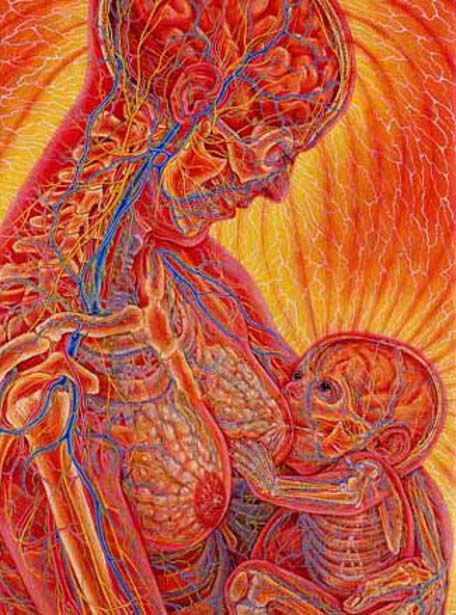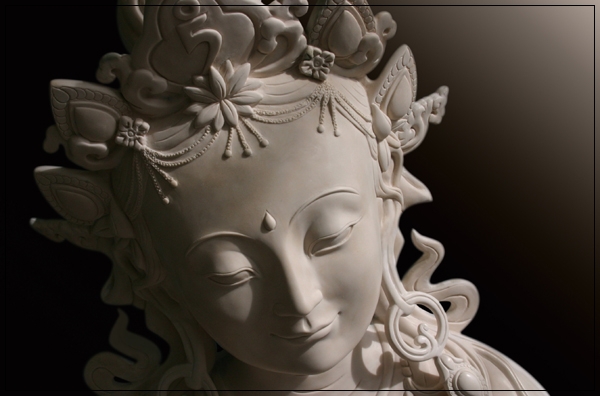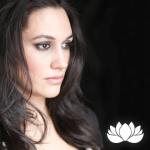Mrs Yasodhara Gautama Buddha

When first I learned how Siddhartha Gautama deserted is 29 year old wife, Yasodhara, on the night of the birth of their son, I found myself considering the strength of the woman. In a society where this was one of the most shameful situations she held her own and refused to desert him in spirit. Though her surrounding family was full of judgement and scorn she held the Mona Lisa styled inner knowing that seemed to provider her with the equanimity to lead her own path with an undefended heart. She must have been courageous and compassionate enough to accept her husband’s path and to let him go.
“Courage is like a muscle. We strengthen it with use.” ~ Ruth Gordon
My reasoning is this: if she was able to rise above the culture of her time, her spiritual growth must have been a little more evolved than her husband’s. You might argue that she had no choice in the matter. He left her. But I argue that her reaction could have been less than gracious. Circa 563 BCE to 483 BCE it would have been easy for her to demand his return to his rightful place beside her as husband and ruler. But she allowed him his personal journey despite suffering the cultural shame and ridicule of her family and people.
“One’s dignity may be assaulted, vandalized and cruelly mocked, but it can never be taken away unless it is surrendered.” ― Michael J. Fox
What triggered such an act of desertion?
Siddhartha was a good man brimming with compassion and empathy for his fellow man. But when Siddhartha caught sight of Yasodhara lovingly doting on their new-born son, Rāhula, the developmental trauma of the death of his own mother not long after he was born filled him with a deep pre-verbal longing and suffering. A latent memory was fired up within him that he could not place it.
Psychotherapist Stolorow says it is unbearable when:
“…emotional pain cannot find a relational home in which it can be held.”
Subliminally, Siddhartha Gautama set out to find that holding home within himself. What became of his searching has impacted every being that has subsequently lived on this earth in one way or another. It is often said that behind every great man is and even greater woman. This wave of wonder would not have happened save for Yasodhara strength – could she have known what The Buddha later taught his followers of having the strength and willingness to pull out the arrow in order to tend to their own wounds with both their minds and their hearts? Sometimes the greatest act of the heart are the hardest to enact.
“One does not have to be helpless and fearful, nor does one have to be hostile and self-referential. The mind knows intuitively how to find a middle path. Its implicit relational capacity is hardwired.” ~ Mark Epstein
What is the source of a woman’s intuition?
As a new mother, Yasodhara’s intuition and connectedness would have been free-flowing. The Oxytixcin and Vassopressin hormones that form the bond between mother and child can almost be like a spiritual experience. The non-verbal connection we feel is visceral and powerful. Those of us who have been mothers can respond to our child needs without so much as a peep. We intuit our child’s needs wants and desires. I could understand my son’s needs and distresses on the particular tone of his cry. Ancient texts describe a similarly close relationship between Yasodhara and Siddharth – as young lovers they were inseparable. Adult relationships are too cemented by these same hormones but are released to a lesser extent than a postnatal relationship. It is then plausible to assume that upon the birth of his son, Siddhartha felt replaced and became painfully aware that his loving wife would be directing her attention from him to his son.

A woman’s personal growth has been far different to a man’s. Historically, if a woman is to dedicate her life to this journey she has been expected to deprecate her feminine essence as proof of her dedication. This is incongruent with spiritual teachings and practices of respect and equality for all beings. As further proof of her dedication a woman would shadow the monastic fellowships, unprotected from their community. Our adaptive ability to ‘step up’ to do what needs to be done for what we know to be pure and right and honorable is a quality of greatness.
But I am not sure if denying our humanness is congruent with what it means to be an authentic human being. It was The Buddha’s step mother and his assistant who caused him to see the hypocrisy in the current trend. I tip my hat to these trailblazers who have sacrificed greatly in our fight for equality. But feminism is not so much about being more manly so much as it is about embracing our womanhood, and honouring what we have to offer the yin-yang cycle of balance. If the scale is tipped, we are incomplete.
This is the year of compassion. A year of empathy. In this cold harsh, isolated society, connection is what we need in order to take our society to the next stage of universal growth and development . These are so-called feminine characteristics, so, let us reconnect with our unique qualities, embody our feminine essence, and contribute to this next cycle of growth.
by Hope Bastine
Reference:
Constans, G. (2009) Buddha’s Wife. Robert Reed Publishers: Bandon, OR.
Epstein, M. (2014) The Trauma of Everyday Life. Hay House: UK.
Gerzema, J. and D’Antonio, M. (2013) The Athena Doctrine: How Women (and the Men Who Think Like Them) Will Rule the Future. John Wiley & Sons: USA.
Hesse, H. (1922) Siddhartha. Penguin Classics: UK.
Kornfield, J. (1993) A Path with Heart. Batam Books: New York.
Murcott, S. (1991) The First Buddhist Women: Translations and Commentaries on the Therigatha. Parallax Press: Berkeley, CA.
Rev Prof Wright, S. (2005) Whatever happened to Mrs Buddha? Spirituality and Health International Volume 6 Issue 1. Whurr Publishers Ltd
Stolorow, R.D. (2007). Trauma and human existence: Autobiographical, psychoanalytic, and philosophical reflections. New York: Routledge.




